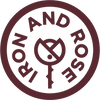We’re probably all guilty of it to an extent, in both our daily lives and in business. Choosing the same clothes, listening to the same music, getting the same haircuts. Thinking that if we did what that business over there did we’d be that bit more successful or attract more customers. There is a very natural tendency to converge in taste and activity and be like others.
The wine world is no different. The phenomenal success of Pinot Grigio from the Veneto region of northern Italy has led to the grape variety being grown in regions where it was never known before in order to jump on that lucrative band-wagon. Similarly the search for “the new” Prosecco has led to easy drinking sparkling wines being produced in parts of the world that are perhaps not suited to making them and the reinvention or repackaging of less fashionable fizz.
The established wine control systems of, for example, France and Italy, i.e. Appellation Contrôlée, DOCG etc, were established to protect regional identity and quality by, amongst other things, identifying which grape varieties should be used, how the vines should be trained and where they can be planted, to control yields and in some cases restrict wine making methods. In very many ways they are a good thing.
But in some ways they act to outlaw the outliers, force convergence and restrict progress. Increasingly, progressive growers find themselves outside the legal definition of their region. Famously some of the most sought after wines of Italy are labelled simply as “Italian Wine”. Equally some of the most exciting natural wines find themselves falling foul of the rules. Part of the issue lies with who makes the rules and their lack of development.
As Alsace grower Pierre Frick points out the vast majority of wine produced in his region is produced by just a handful of wineries although there are hundreds of other growers. And the way the Appellation Contrôlée system is funded, by a tax on each litre of wine produced, perhaps means that those few large wineries have the greatest financial sway on the authorities so that wines that don’t taste like theirs are more likely to be outlawed. Anything cloudy, the natural condition of wine, a bit outside the mainstream in flavour or style for example can be rejected and allowed only the humble Vin de France label.
So it pays to take account of the people behind the wines, not to judge a book, or wine, by its cover. As in many things, often the most exciting stuff is happening at the fringes and being done by the people breaking the rules and resisting the urge to converge.
Two to try:
Domaine Thierry Navarre, Vin d’Oeillades - This wine is made in the village of St Chinian which has its own Appellation Contrôlée but from a grape variety that was almost lost to history and not included in the AC definition. Delightfully easy to drink, soft and round it is a true expression of the South of France. Just not the rules.
Jan Matthias Klein, Little Bastard - Labelled humbly as Deutscher Landwein, this is actually from one of the finest sites on the Mosel, perhaps the most prestigious region of Germany. But it is made in a very modern style using a blend of grapes, a bit of skin contact and no chemicals whatsoever. A gorgeous wine that could only possibly have been made where it was but not one that fits the rigid wine rules to achieve a higher classification.

